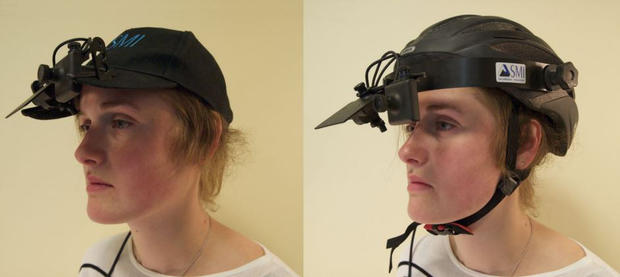
A new study conducted by the Department of Psychology at Bath University has concluded that cyclists who do opt to wear a helmet are more likely to take risks than those who do not.
Produced by Tim Gamble and Ian Walker, the study used helmet and cap mounted eye trackers on 80 participants. 15 male and 24 females riders had a helmet, while the remaining 19 male and 22 females wore a cap.
The paper’s abstract reads:
We demonstrated that risk taking increases in people who are not explicitly aware they are wearing protective equipment; furthermore, this happens for behaviors that could not be made safer by that equipment. In a controlled study in which a helmet, compared with a baseball cap, was used as the head mount for an eye tracker, participants scored significantly higher on laboratory measures of both risk taking and sensation seeking. This happened despite there being no risk for the helmet to ameliorate and despite it being introduced purely as an eye tracker. The results suggest that unconscious activation of safety-related concepts primes globally increased risk propensity.
Conducted in the University’s eye tracking laboratory, participants were told that they would complete a number of computer-based risk taking measures. The following series of tests included both real and faked simulations. All was revealed to the volunteers afterwards and data was taken on their bicycling habits.
The results returned a conclusive outcome that risk taking increased while wearing a helmet, as did sensation seeking.
The paper concludes:
“The practical implication of our findings, in which risk taking changed in a global way when the helmet was worn, might be to suggest more extreme unintended consequences of safety equipment in hazardous situations than has previously been thought. The idea that people might take more risks when wearing safety equipment designed to protect against those risks has a considerable (Adams, 1982, 1995; Adams & Hillman, 2001; Hedlund, 2000), although not uncontroversial (McKenna, 1988), history. If this laboratory demonstration of globally increased risk taking arising from localized protection were to be replicated in real settings, this could suggest that people using protective equipment against specific hazards might also be unduly inclined to take risks that such protective equipment cannot reasonably be expected to guard against. This is not to suggest that the safety equipment will necessarily have its specific utility nullified, but rather that there could be changes in behavior wider than previously envisaged.”
You can download the findings here.

